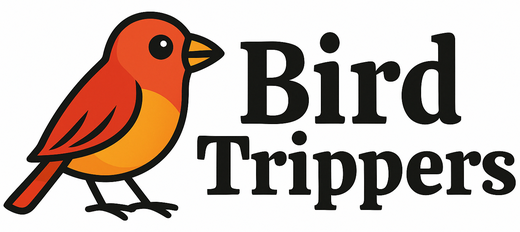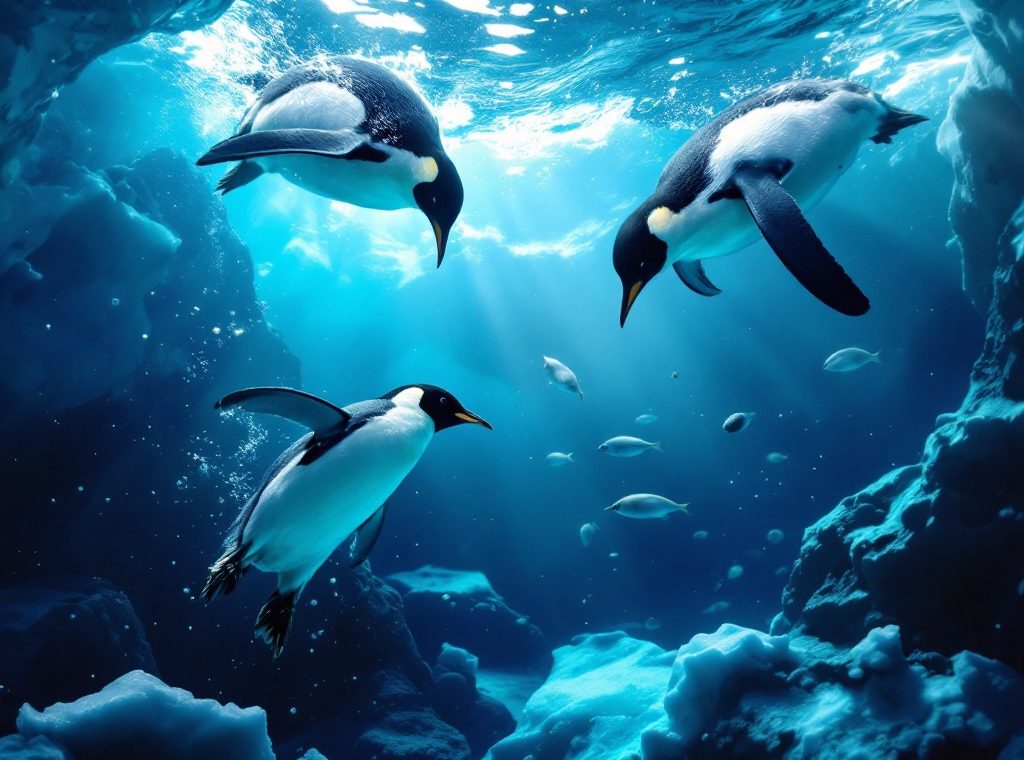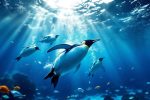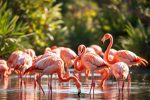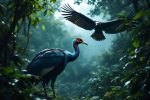What Do Penguins Eat and How Do They Hunt
Dive into the fascinating world of penguin dining! These flightless birds, from the majestic Emperor to the diminutive Little Blue, boast unique and varied diets. Discover how penguins hunt, from deep dives exceeding 500 meters to cooperative herding strategies. Learn about their remarkable adaptations, like swallowing stones for digestion and enduring fasts of up to four months. Explore the surprising role of bioluminescence in their hunting prowess and how their dietary preferences impact the delicate balance of the ocean ecosystem. Uncover the secrets of penguin feeding habits now!
Important information
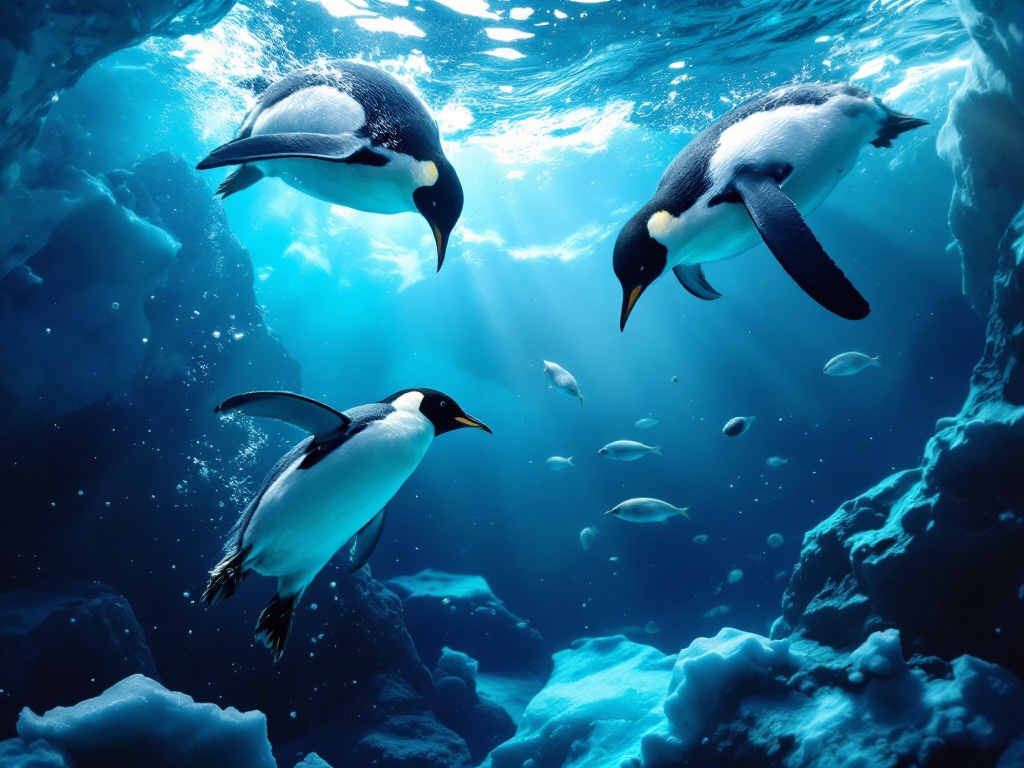
- Penguins eat krill, fish, and squid, but their diet varies by species. Emperor penguins prefer fish and squid, while Adélie penguins mainly eat krill.
- They are skilled hunters, using pursuit diving and “porpoising” (leaping from the water) to catch prey. Some species hunt cooperatively, herding fish or taking turns diving.
- Penguins use their sharp eyesight and can detect bioluminescent light to find prey in deep, dark waters.
- They swallow stones to help grind food and for diving ballast.
- Penguins fast during molting and breeding seasons, with Emperor penguins fasting for up to four months.
Penguin Diet and Eating Habits
Penguins’ diets consist primarily of krill, squid, and fish, though the specific mix depends on the penguin species and their habitat. For instance, the majestic Emperor penguin favors fish and squid, while smaller species like the Adélie primarily consume krill. Environmental shifts influence food availability, impacting both penguins’ hunting strategies and their dietary composition. Furthermore, penguins often fast, particularly during breeding or molting seasons. These fasts can range from several days to weeks, depending on the species and circumstance, significantly altering their regular eating patterns.
What Do Penguins Eat?
Penguins’ diets consist mainly of krill, fish, and squid. Their keen eyesight is essential for locating these meals in the ocean depths. A penguin’s specific diet varies depending on its species and habitat. For instance, emperor penguins primarily eat fish, while Adélie penguins favor krill. Penguins swallow their prey whole during their dives.
Dietary Preferences of Different Penguin Species
Adélie penguins primarily feed on krill.
Emperor and King penguins mainly consume fish and squid, with Emperors diving deep for larger prey.
Gentoo penguins have a diverse diet of krill, fish, and crustaceans.
Little Blue penguins, similar to Gentoos, savor small fish and crustaceans.
This specialized feeding allows various penguin species to thrive by minimizing competition.
How Much Do Penguins Consume Daily?
Penguins significantly increase their weight during summer by consuming approximately 0.9 kg of food each day. Adélie penguins, known for their voracious appetite for krill, collectively consume a remarkable 1.5 billion kg of krill annually. This underscores their substantial dietary needs.
Unique Eating Behaviors: Stone Swallowing and Fasting
Penguins have a peculiar habit of swallowing stones. These stones serve a dual purpose: they aid in grinding food within their gizzards and provide essential ballast for diving. Fasting also plays a crucial role in a penguin’s life, particularly during molting and breeding seasons. Emperor penguins are the undisputed champions of this practice, enduring fasts of up to four months—the longest of any penguin species.
Penguin Hunting Strategies and Behaviors
Penguins are remarkably agile hunters, employing speed and cunning pursuit-diving techniques to catch their prey. Their methods vary, often involving swift turns and impressive dives, some exceeding 500 meters. Streamlined bodies and powerful flippers propel them through the water at speeds up to 15 miles per hour. Many penguins, like Emperor penguins, hunt cooperatively, herding fish or taking turns diving to increase their success rate. Others, such as the Little Blue Penguin, prefer a solitary approach. While Emperor penguins plunge into the depths for larger fish, Little Blue Penguins stay near the surface, feeding on krill. All penguins rely on sharp beaks to grip their slippery prey of fish and squid. Some, like the “porpoising” penguins, leap from the water to breathe and accelerate. Their exceptional eyesight, coupled with counter-shading camouflage, allows them to spot prey in murky water while also evading predators.
How Penguins Hunt for Food
Penguins are expert hunters, diving deep into the ocean to pursue fish, squid, and krill. They expertly navigate schools of fish, snatching prey with their sharp beaks. These incredible swimmers employ a technique called “porpoising” for bursts of speed, leaping through the water to increase their hunting efficiency. However, survival in their challenging ocean habitat demands constant effort, making the search for food a continuous struggle.
Diving and Foraging Techniques
Penguins are incredible divers, reaching depths of 395 feet, though they typically hunt in shallower waters of 15 to 18 meters. Their hunting technique is pursuit diving, employing impressive underwater agility and a clever trick called “porpoising” to breathe and maintain speed. Their sharp beaks are perfectly designed for catching slippery prey like fish and squid. Some penguins even hunt in groups, corralling fish for easier capture.
Open-Ocean Diving vs. Seafloor Foraging
Penguins utilize two main hunting strategies: open-ocean diving and seafloor foraging. Open-ocean divers, such as the Emperor penguin, target swift prey like fish and squid in the water column. Seafloor foragers, like the Gentoo penguin, focus on bottom-dwelling creatures such as crustaceans and invertebrates. A penguin’s chosen method depends on factors like prey availability and the penguin’s physical adaptations. Some species are built for deep dives, while others excel at scouring the seabed.
Multispecies Feeding and Group Hunting
Galápagos penguins often hunt alongside other seabirds like boobies and cormorants. This mixed-species foraging increases their hunting success. Working together, they coordinate their movements to herd prey into tight groups, making it easier to snatch individual fish or krill. This herding tactic is particularly beneficial for Galápagos penguins, whose diet consists mainly of small prey such as krill and small fish.
Penguin Vision and Bioluminescence in Hunting
Penguins rely on their exceptional eyesight to hunt fish and krill in the ocean’s depths, where light is scarce. While the ocean’s depths are often dark, bioluminescence, the light produced by certain marine organisms, provides an unexpected advantage for penguins. Their sharp vision allows them to detect this bioluminescent light, revealing the location of their prey, even in the darkest zones of the ocean. This adaptation makes them highly effective hunters in a challenging environment.
